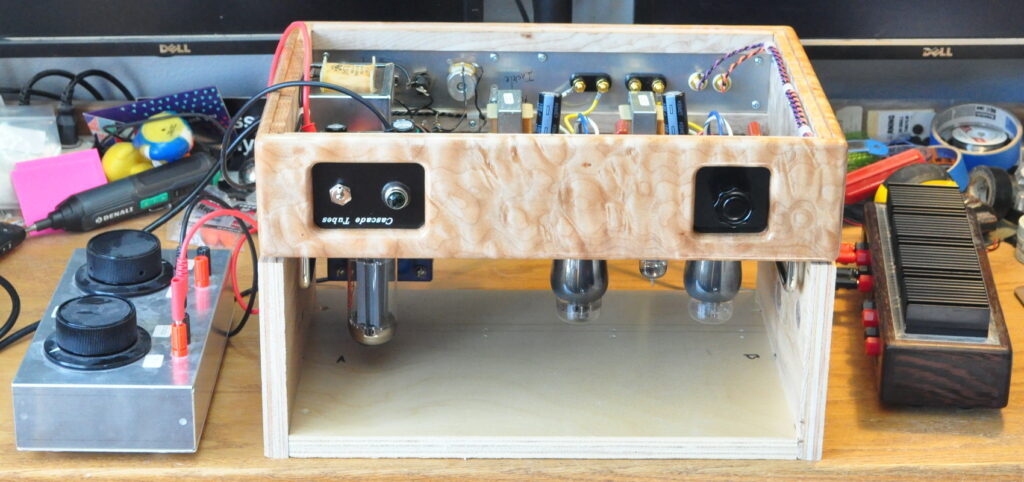I took some time yesterday to finish up the 6V6 Curly Maple assembly. Everything is complete and in place except for the main dropping resistor, Rd.
Here’s how it looks with the top plate installed in the chassis and with all the wiring complete.
The sharp eyed will notice that there are a couple of test leads connected to the Rd terminals next to the rectifier socket. This is because the work did not stop with the assembly.
Following the assembly I got out the cradle and got the amplifier populated for first voltage checks. Here she is in the cradle on my work desk.
First the amp got a fuse and indicator light and the open socket checks were all made. Then, with a JJ 5U4, a GE 12AU7, and a pair of Zeneth 6V6Gs in place, I ran through the initial checks. Everything measured as expected. After some fiddling I settled on a 200Ω value for Rd and that’s from where the “Almost” in the title comes. After digging through my stash I determined that I had precision 5W resistors in all the sizes between 150Ω and 500Ω one could hope for. Except the 200Ω value. I could have put a couple of 400Ω in parallel (like I did with the 6AS7 “Purpleheart” Set), but I was determined not to kludge anything in this amplifier.
So I placed an order for some 200Ω/5W 1% resistors. I ordered some Ohmite 45F200E power resistors. These are nice silicon coated high temperature resistors which should do the job admirably. The dissipation should be less than 2W so these have ≈250% thermal margin. The resistors shipped this morning and should be in my hands by the end of the week. So next weekend will be final voltage checks and then testing. Should be fun.
As always, questions and comments are welcome.



Zenith 6V6G’s – NOS or used? Either way, they could be from the 1930’s.
I’ve had this set for over a decade and I don’t remember where I acquired them. They look new-ish but the numbers on the glass are very worn. I believe that these tubes have been cleaned at some point. They have matching “N20” date codes but I don’t know how to decipher these codes. We’ll see how they perform in the new amp.
Did a little research. The 6V6GT came out in 1941 as part of the war effort (small ST envelope tubes were replaced by T style envelopes to save glass). So your 6V6G’s are almost certain to be from the 1930’s. Them suckers are ancient.
That is very interesting – Thanks